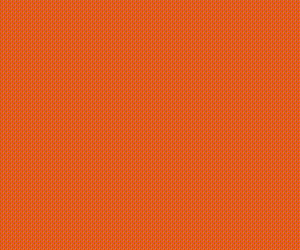-
 Home
Home
-
 News
News
-
 Colleges
Colleges
Pakistan's Largest Database of Colleges and Universities
Explore Largest Directory of Private and Govt. Colleges, Universities and find best institute for your future Education.
-
 Courses
Courses
-
 Admission
Admission
-
 Lectures
Lectures
-
 Online Test
Online Test
Short Question
- 9th Class Physics Short Questions
- 9th Class Chemistry Short Questions
- 9th Class Math Short Questions
- 9th Class Biology Short Questions
- 9th Class Computer Short Questions
- 9th Class English Short Questions
- 10th Class Physics Short Question
- 10th Class Chemistry Short Question
- 10th Class Math Short Question
- 10th Class Biology Short Question
- 10th Class Computer Short Question
- 10th Class English Short Question
-
 Past Papers
Past Papers
-
 Date Sheets
Date Sheets
-
 Results
Results
Exam Results 2024
Check online Results 2024 Matric Inter BA BSc B.Com MA MSc M.Com CSS PCS MCAT ECAT of all educational boards and universities in Pakistan
-
 Study Abroad
Study Abroad
Study Abroad Programs and Opportunities for Pakistani Students
Explore free study abroad search to find programs, consultants, events to study in USA, UK, Australia, China, Malaysia and many others.
-
 Jobs
Jobs
-
 Tutors
Tutors
-
 More
More
-
 Apps
Apps
ICOM Part 2 English Medium Principles of Banking Chapter 3 MCQ's Test
Principles of Banking Icom Part 2 English Medium Chapter 3 Online Test
Try the Principles of Banking Icom Part 2 English Medium Chapter 3 Online Test.
-
Total Questions15
-
Time Allowed20
Question # 1
Loan Create
Question # 2
The capital of stat bank of the time of establishment was.
Question # 3
Up to December 1965, Pakistan used method of note issue.
Question # 4
The principle of note issue are.
Question # 5
How many benefits of customers
Question # 6
Which of the following is not an objective of central bank.
Question # 7
The Weapons of Monetary policy are.
Question # 8
ATM is used to withdraw money from the
Question # 9
At Present the Governor of State Bank of Pakistan is.
Question # 10
What is necessary to withdraw money through ATM
Question # 11
The quantitative methods of credit control are in nature.
Question # 12
If Central Bank wants to decreae the quantity of money in country it
Question # 13
Quantitive methods are contral on
Question # 14
The principle of not issue is
Question # 15
Qualitative methods are control over.
Top Scorers of Principles of Banking Icom Part 2 English Medium Chapter 3 Online Test
-
S saif jutt basra 15 - Jun - 2022 01 Min 12 Sec 15/15 -
S saif jutt basra 15 - Jun - 2022 01 Min 15 Sec 14/15 -
S saif jutt basra 15 - Jun - 2022 01 Min 16 Sec 14/15 -
S saif jutt basra 15 - Jun - 2022 01 Min 28 Sec 14/15 -
P Pubg Acc 19 - Jun - 2022 02 Min 46 Sec 14/15 -
S saif jutt basra 15 - Jun - 2022 01 Min 26 Sec 13/15 -
S saif jutt basra 15 - Jun - 2022 01 Min 36 Sec 13/15 -
S saif jutt basra 15 - Jun - 2022 01 Min 45 Sec 13/15 -
K KHALIL UR REHAMAN 10 - Aug - 2022 01 Min 52 Sec 13/15 -
K KHALIL UR REHAMAN 10 - Aug - 2022 02 Min 09 Sec 13/15 -
F FaRooq*reHan 8bp Shk 20 - Jun - 2022 02 Min 45 Sec 13/15 -
P Pubg Acc 19 - Jun - 2022 03 Min 01 Sec 13/15 -
S saif jutt basra 23 - Jun - 2022 02 Min 05 Sec 12/15 -
K KHALIL UR REHAMAN 10 - Aug - 2022 02 Min 10 Sec 12/15 -
H Hassan Maqsood 25 - May - 2023 02 Min 17 Sec 12/15

.gif)
















.png)

